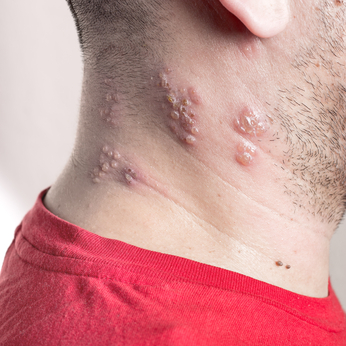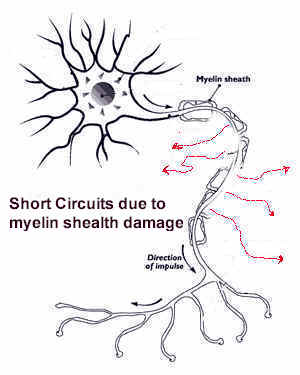Shingles, and postherpetic Neuralgia (nerve damage) and what can be done for relief
What is Shingles?
 The medical term for Shingles is acute herpes zoster. It is commonly called shingles and is an infection caused by the same virus that causes chickenpox. Only people who have had chicken pox can get shingles.
The medical term for Shingles is acute herpes zoster. It is commonly called shingles and is an infection caused by the same virus that causes chickenpox. Only people who have had chicken pox can get shingles.
The first time someone is exposed to the virus, it causes the widespread, itchy sores known as chickenpox. After a patient recovers from the chicken pox, the virus remains inactive in the body but the virus never goes away. Instead, it settles in nerve cells and may reactivate year’s later, causing shingles.
People over the age of 50, or those with weakened immune systems are at the highest risk for developing shingles. Other factors that increase your risk include:
- Some cancer medicines
- Steroid medicines
- Long-term stress or trauma
- A weak immune system from illnesses
When the virus is reactivated it begins to multiply within the dorsal root ganglia (a part of the nervous system), which causes damage and swelling to this area of the nerve. This damage to the nerve causes the first pains of shingles. The virus then moves along the nerve to the skin, damaging the nerve and causing swelling as it goes. When the virus finally reaches the skin, it causes the shingles rash.
Shingles appears as a painful skin rash, typically on only one side of the body in a belt-like pattern. (Shingles comes from the Latin word for girdle or belt) The rash is usually on either the right or left side of the chest, starting in the middle of the back and wrapping around to the breast, but it can occur in any part of the body. The rash generally lasts from one to fourteen days.
Most of the time, shingles is very painful. Sometimes the pain from shingles starts before the rash appears. When the pain starts before the skin rash, it can be very hard to get a correct diagnosis. Many patients have been told they have heart attacks, appendicitis, migraine headaches, etc. before getting the correct diagnosis of shingles.
Fortunately, in most cases the pain of shingles gradually disappears over several weeks or months. Most people with shingles will have no pain or just a little pain one year after the rash.
Some patients with shingles develop neuralgia (a neuropathy) a condition in which the pain from shingles continues months or years after the rash has faded
What is Postherpetic Neuralgia?
If the pain from shingles does not go away, it is called postherpetic neuralgia (PHN). It is also referred to as neuropathy. It is nerve damage.A recent study showed that people with neuropathy – nerves of the body that are not working correctly – are more likely to develop PHN after shingles.
It is interesting that most people in this study who had a neuropathy before they got shingles did not know they had neuropathy — they did not have any symptoms. Therefore, having neuropathy, even if it is not causing symptoms, may increase the chances of getting PHN. Sometimes neuropathy is cumulative. There is some damage but the shingles creates more damage and the symptoms of neuropathy appear.
Pain from Shingles and Postherpetic Neuralgia
Patients often describe the pain from shingles as a horrible, unbearable pain in the area of the rash. Each patient may experience different types and degrees of pain. The words used to describe the pain include sharp, electric-like jabs, burning, throbbing, aching, and skin sensitivity. It is a neuropathy – or nerve damage. There also may be intense itching in the painful area. The pain of the neuropathy may spread beyond the original shingles rash.
What can be done about postherpetic neuropathy?
It is known that Infections and autoimmune disorders can cause peripheral neuropathy and shingles is one of them. These viruses severely damage the sensory nerves.
What can be done for the Nerve Damage?
 Treatment for Neuropathy
Treatment for Neuropathy
For more information about neuropathy and the standard medical treatments – go to Neuropathy Treatments
What can you do?
Take a Quiz: Am I doing everything I can to daily help my neuropathy?
Find out what lifestyle changes will help, take the quiz and get our suggestions and get our assistance on what you can do.
Take Our Quiz
Lasting Relief:
None of the various neuropathy treatments will increase nerve health. You can cover up the symptoms and you can increase circulation and you can make a person feel less pain, etc., but if you restore nerve health, there will not be any symptoms (healthy nerves don’t hurt, tingle, burn, are not numb, etc.) and the relief will be lasting. By increasing nerve health, your symptoms will decrease.
Improving Nerve Health*
Healthy sensory nerves mean that they are not painful. Healthy nerves means that they communicate and don’t send wrong signals such as burning, hot and cold, tingling when there is no reason for it. Healthy motor nerves mean that they relay messages from the brain to the muscle so that they move correctly. Nerves need to be healthy to function properly.
The body needs specific nutrients (vitamins) to increase nerve health. .
It may not give immediate relief (although many do feel changes in the first week of supplementation) as the vitamins are working at a cellular level, but it does address the actual problem, healthy nerves brings lasting relief.
(For temporary relief while building healthy nerves, go to Pain Relief Formula)
What can be done for this lasting relief?
Find out how to Healthy Nerves
*Studies & Research on Nerve Health
STILL HAVE QUESTIONS? CALL 818 252-1038 OR EMAIL AND GET YOUR QUESTIONS ANSWERED.
Additional articles:
Sign up to receive the MCVitamins Newsletter!
Up-to-date info on the latest health-related news happening in the world
(available in English only)

